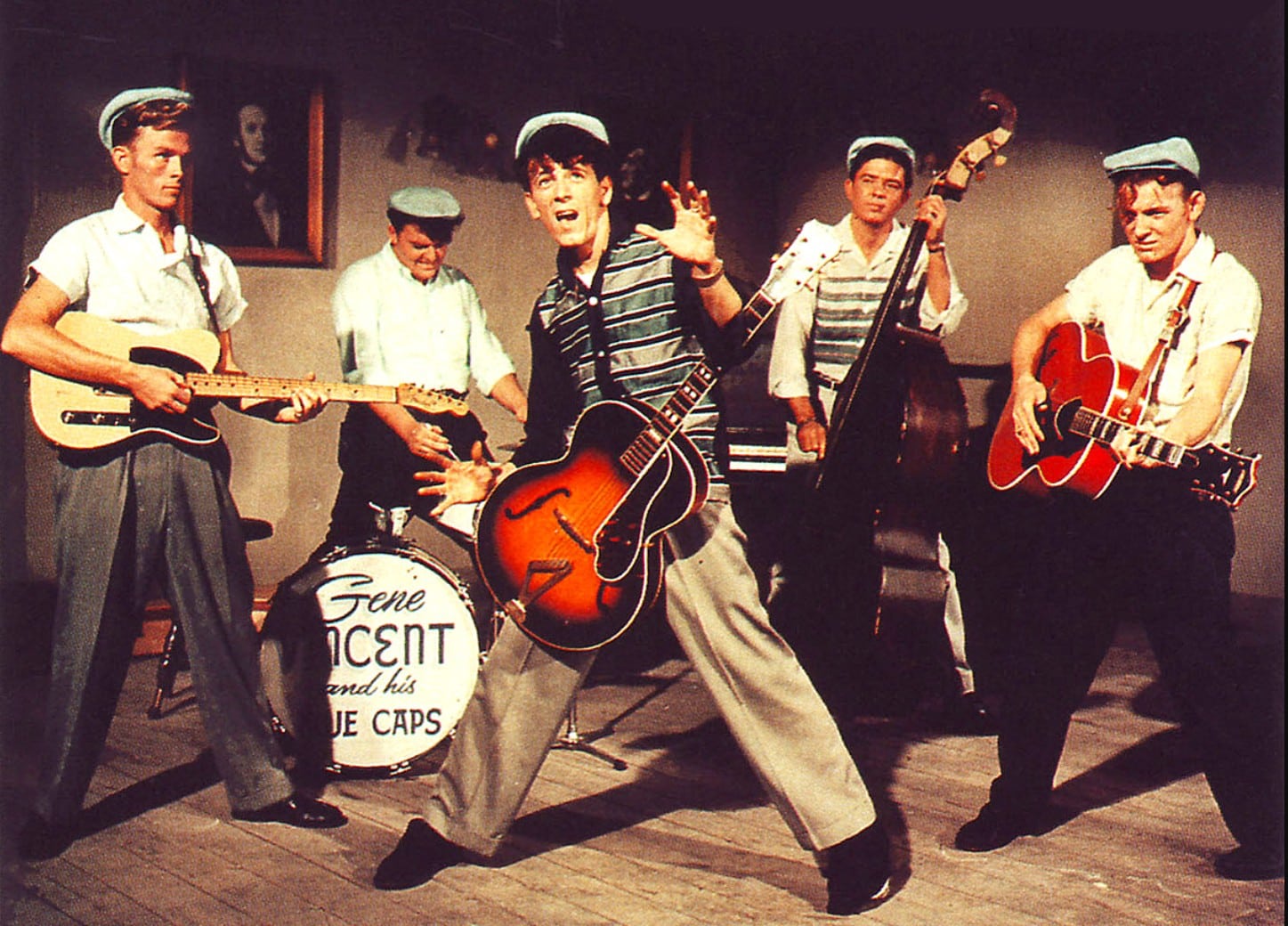
About the song
“Be-Bop-a-Lula” is an iconic rockabilly song first recorded in 1956 by Gene Vincent and His Blue Caps. This seminal track has a fascinating backstory and played a pivotal role in the rock ‘n’ roll revolution of the mid-20th century. The songwriting credits for “Be-Bop-a-Lula” go to Gene Vincent and his manager, Bill “Sheriff Tex” Davis, though the origins of the song are somewhat contentious.
The song is said to have been conceived in 1955 while Vincent was recuperating from a motorcycle accident at the US Naval Hospital in Portsmouth, Virginia. During his recovery, Vincent met Donald Graves, who reportedly wrote the lyrics while Vincent composed the tune. However, the song’s rights were later allegedly bought by Davis for about $50, and Davis claimed co-authorship with Vincent, drawing inspiration from the song “Don’t Bring Lulu” and the comic strip “Little Lulu.”
“Be-Bop-a-Lula” carries echoes of earlier jazz and R&B influences, with its title reminiscent of Helen Humes’ “Be-Baba-Leba,” a 1945 R&B hit that influenced the bebop style. The song’s catchy and rebellious spirit struck a chord with the burgeoning youth culture of the 1950s.
Gene Vincent’s journey to recording the song began with a performance on a Norfolk, Virginia radio show. A demo of the song found its way to Capitol Records, which was seeking a new sensation to rival Elvis Presley. Vincent and His Blue Caps recorded “Be-Bop-a-Lula” on May 4, 1956, at Bradley Studios in Nashville, Tennessee. The band included Cliff Gallup on lead guitar, “Wee” Willie Williams on rhythm guitar, “Jumpin'” Jack Neal on string bass, and Dickie “Be Bop” Harrell on drums. Harrell’s memorable background screams during the recording were intended to ensure his mother recognized his contribution.
Released in June 1956, the song quickly gained traction, peaking at No. 7 on the US Billboard pop music chart, No. 8 on the R&B chart, and No. 5 on the C&W Best Seller chart. It also reached No. 16 on the UK charts in August 1956. By April 1957, over 2 million copies had reportedly been sold, solidifying its status as a commercial triumph.
“Be-Bop-a-Lula” drew inevitable comparisons to Elvis Presley, cementing Vincent’s place in rock ‘n’ roll history. Rolling Stone later ranked the song No. 103 on its list of the 500 Greatest Songs of All Time. The song’s impact extended beyond the charts; it was famously performed by Vincent in the film “The Girl Can’t Help It,” released in December 1956, and featured in the soundtracks of movies like “Wild at Heart” (1990) and “Pleasantville” (1998).
In 1999, the 1956 recording of “Be-Bop-a-Lula” was inducted into the Grammy Hall of Fame, acknowledging its enduring influence and significance in the world of music. The song’s timeless appeal continues to resonate with new generations, securing Gene Vincent’s legacy as a pioneer of rockabilly and rock ‘n’ roll.
Video
Lyrics
Well, be-bop-a-lula, she’s my baby
Be-bop-a-lula, I don’t mean maybe
Be-bop-a-lula, she’s my baby
Be-bop-a-lula, I don’t mean maybe
Be-bop-a-lula
She’s my baby doll, my baby doll, my baby doll
Well she’s the girl in the red blue jeans
She’s the queen of all the teens
She’s the one woman that I know
She’s the woman that loves me so
Be-bop-a-lula, she’s my baby
Be-bop-a-lula, I don’t mean maybe
Be-bop-a-lula
She’s my baby doll, my baby doll, my baby doll
Let’s rock!
Well now she’s the one that’s got that beat
She’s the one with the flyin’ feet
She’s the one that bops around the store
She’s the one that gives more more more more
Be-bop-a-lula, she’s my baby
Be-bop-a-lula, I don’t mean maybe
Be-bop-a-lula
She’s my baby doll, my baby doll, my baby doll
Let’s rock again now!
Well, be-bop-a-lula, she’s my baby
Be-bop-a-lula, I don’t mean maybe
Be-bop-a-lula, she’s my baby
Be-bop-a-lula, I don’t mean maybe
Be-bop-a-lula
She’s my baby doll, my baby doll, my baby doll